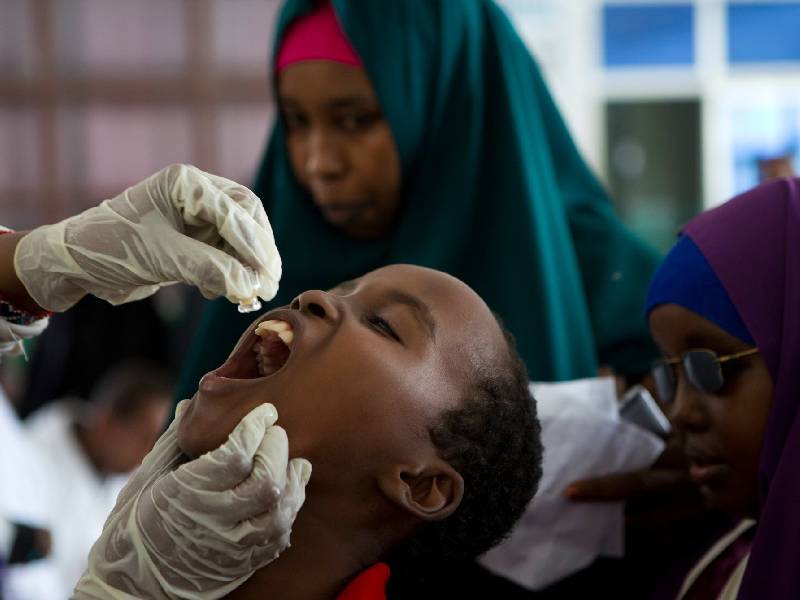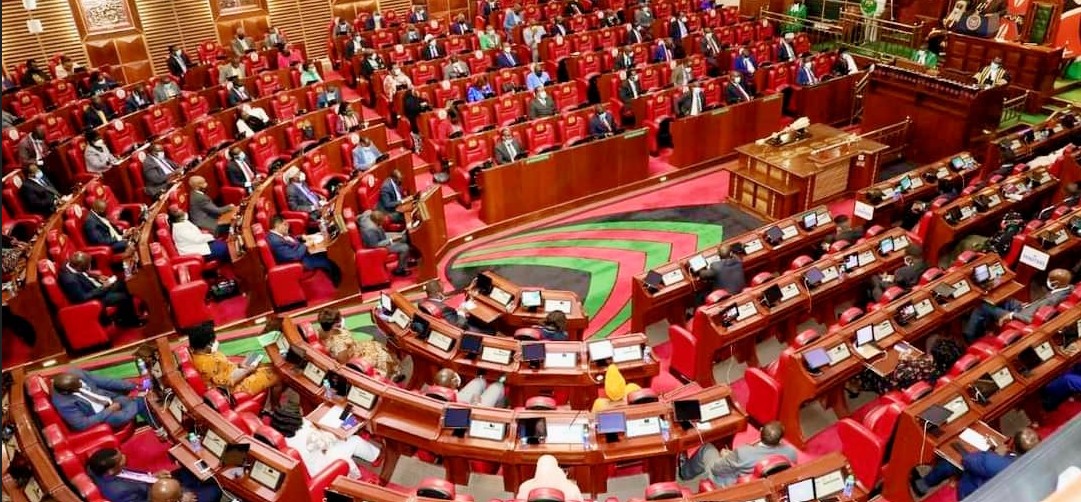Cholera vaccines: What you need to know and why they matter

As of August 17, 2025, the WHO reported 4,738 deaths from cholera and acute watery diarrhoea (AWD) across 31 countries. Earlier in the year, global deaths rose from 1,514 by March to 3,522 by June.
Cholera remains a persistent threat in Kenya, particularly in areas with poor sanitation, limited access to clean water, and overcrowded living conditions.
This acute diarrheal disease, caused by Vibrio cholerae bacteria, leads to severe watery diarrhoea and vomiting, resulting in rapid dehydration and potentially death if untreated, according to the World Health Organisation (WHO).
More To Read
- Narok health officials sound alarm on fake cholera vaccination drives amid rising cases
- MSF raises alarm over worsening cholera epidemic in DRC, over 58,000 cases reported
- Severe flooding affects over 960,000 in South Sudan: UN
- Health officials urge vigilance as cholera claims four lives in Narok
- UK, African researchers join forces in Sh1.4 billion battle against bilharzia
- Haiti: UN relief chief implores ‘we have to do better’ to support gang-ravaged nation
The disease spreads primarily through contaminated water or food. Infections often occur due to unsafe drinking water, poor hygiene, or consuming contaminated food. While cholera is not typically transmitted directly from person to person, outbreaks can escalate rapidly when communities share contaminated resources.
The rainy season significantly increases cholera risks. Heavy rains and flooding contaminate water sources with sewage and force people into overcrowded shelters with inadequate sanitation. Floods also damage latrines, water pipes, and sewage systems, creating ideal conditions for bacterial spread.
In February 2025, Kenya declared a major cholera outbreak affecting counties such as Nairobi, Kisumu, Migori, Mombasa, Turkana, and Kwale. The outbreak was driven by poor sanitation, limited clean water access, and flooding that displaced communities. By mid-year, hundreds of suspected cases and dozens of deaths were reported. At one point, the case fatality rate exceeded the WHO’s 1 per cent threshold, exposing gaps in treatment and response.
Cholera typically begins with sudden, profuse watery diarrhoea, often described as “rice water stools”, and may include vomiting. Without prompt treatment, it can lead to severe dehydration, shock, kidney failure, and death within hours.
While proper hygiene remains essential, oral cholera vaccines (OCVs) have proven effective in reducing infection risk and severity. WHO-prequalified vaccines include Dukoral, Euvichol Plus, and Euvichol S. The latter two do not require a buffer solution and are suitable for individuals aged one year and above.
Two doses, spaced at least two weeks apart, offer protection for up to three years; a single dose provides short-term protection. Dukoral is administered to those aged two and older, with two doses (or three for children aged 2-5), offering protection for about two years.
Cholera vaccines
In outbreak or supply-limited situations, WHO permits a one-dose regimen to extend coverage, though with shorter protection duration. All OCVs are administered orally.
Cholera vaccines fall into two categories: oral and injectable. Oral vaccines include live attenuated and killed (inactivated) types. Live vaccines, containing weakened bacteria, are mainly used for travellers. Killed vaccines, used in endemic areas and mass campaigns, contain inactivated bacteria and sometimes a toxin component. Injectable vaccines, containing inactivated whole cells, are rarely used today due to lower efficacy and safety compared to oral options.
Killed oral vaccines are typically given in two doses, two weeks apart, with boosters every two to three years in endemic areas. The live attenuated vaccine is administered as a single dose to adults aged 18-64, usually before travel to high-risk areas. Injectable vaccines, administered intramuscularly, are now largely obsolete.
Cholera vaccines are generally well tolerated. Oral vaccines may cause mild side effects such as nausea, diarrhoea, stomach pain, or low-grade fever. Severe allergic reactions are rare. Injectable vaccines may cause localised pain or mild fever. People with known allergies to vaccine components should avoid vaccination. Some killed oral vaccines may be given to pregnant women if the cholera risk is high, though live vaccines are not recommended during pregnancy.
Eligibility depends on context, travel, outbreaks, endemic areas, or humanitarian crises, and is guided by local health authorities. Vaccines are safe for children (from age one for some formulations) and pregnant women. Vaccination is recommended for those living in or travelling to cholera-prone areas, especially where water and food safety are compromised.
In Nairobi and other regions, OCVs have been deployed in mass campaigns. Local health authorities may recommend vaccination for residents or travellers in outbreak-prone areas. However, vaccination is only one part of prevention; safe water, sanitation, and hygiene remain critical.
As of August 17, 2025, the WHO reported 4,738 deaths from cholera and acute watery diarrhoea (AWD) across 31 countries. Earlier in the year, global deaths rose from 1,514 by March to 3,522 by June.
In Kenya, six deaths and 97 cases were reported by April 6, 2025, in Migori, Kisumu, and Nairobi. By 22 May, the toll had risen to 13 deaths and 256 suspected cases across Nairobi, Kisumu, Migori, and Kwale. By October, Narok County reported four more deaths and over 15 hospitalisations.
Kenya launched its first national OCV campaign in early 2023 in response to a severe outbreak that began in October 2022 in arid northern regions. By March 2023, over 7,800 cases and 122 deaths had been recorded. The February 2023 campaign targeted 2.2 million people in four high-risk counties, Nairobi, Garissa, Tana River, and Wajir, achieving 99.2 per cent coverage.
A second campaign in August 2023 targeted 1.59 million people across eight counties, including Homa Bay, Kajiado, Marsabit, Nairobi, Wajir, Mandera, Machakos, and Garissa. It surpassed its goal, reaching 1.67 million people (104.5 per cent coverage). Vaccine doses were supplied by the International Coordinating Group on Vaccine Provision, including 2.2 million doses in January, 1.3 million in June, and 175,575 in July 2023.
In 2024 and 2025, public health authorities continued to strengthen cholera preparedness through vaccination readiness, training health workers in high-risk counties, Kajiado, Lamu, Tana River, and enhancing water, sanitation, and hygiene (WASH) efforts.
By mid-2025, Kenya had declared outbreaks in counties such as Nairobi, Kisumu, Migori and Kwale, with 256 suspected cases and 13 deaths reported by May 22, 2025. A September 2025 WHO report listed Kenya among 17 countries conducting reactive OCV campaigns using the single-dose approach due to limited vaccine availability.
Top Stories Today














































